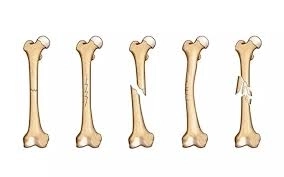
Types of Bone Fractures and Modern Treatment Methods
Published on: 2025-06-14 | Written by: Dr. Ahmed Mustafa Abdel Moneim, Orthopedic and Fracture Surgery
Bone fractures are among the most common injuries in the field of orthopedics. They vary in severity and type depending on the location, shape of the fracture, and the patient’s age. Accurate diagnosis and choosing the appropriate treatment method are essential for a successful recovery. In this article, Dr. Ahmed Mostafa Abdel Moneim explains the main types of fractures and the latest treatment techniques.
Types of Fractures:
1. Closed Fracture:
Occurs when the bone breaks without piercing the skin. It’s the most common type.
2. Open Fracture:
Characterized by a wound where the bone breaks through the skin. It requires urgent surgical intervention to prevent infection.
3. Hairline Fracture:
A thin crack in the bone, often hard to detect with a regular X-ray. Usually caused by repetitive stress.
4. Comminuted Fracture:
The bone shatters into multiple pieces. This is a complex fracture that requires advanced treatment.
5. Spiral Fracture:
Caused by a twisting force, resulting in a spiral-shaped break.
6. Greenstick Fracture (in children):
A partial fracture common in children, where the bone bends and cracks without breaking completely.
7. Compression Fracture:
Often occurs in the vertebrae due to osteoporosis or severe trauma.
Modern Treatment Methods:
✅ Conservative (Non-Surgical) Treatment:
Used for stable or hairline fractures. Includes:
-
Casting or splinting
-
Rest and avoiding strain
-
Supplements to support bone healing
✅ Surgical Treatment:
Required for complex or open fractures, such as:
-
Internal fixation using plates and screws
-
Intramedullary nails for long bones like the femur or forearm
-
External fixation in cases of open or multiple injuries
✅ Physical Therapy and Rehabilitation:
A vital stage after fracture fixation that helps:
-
Restore mobility
-
Strengthen muscles
-
Prevent stiffness and loss of function
When to See a Doctor:
Dr. Ahmed Mostafa Abdel Moneim recommends seeking medical attention immediately if you experience:
-
Severe pain or visible deformity
-
Inability to move or bear weight
-
A popping or cracking sound at the time of injury
-
Swelling or discoloration of the skin
Tips for Faster Recovery:
-
Follow your doctor’s instructions carefully
-
Attend all physical therapy sessions
-
Eat a balanced diet rich in calcium and vitamin D
-
Avoid putting weight on the injured limb until advised

